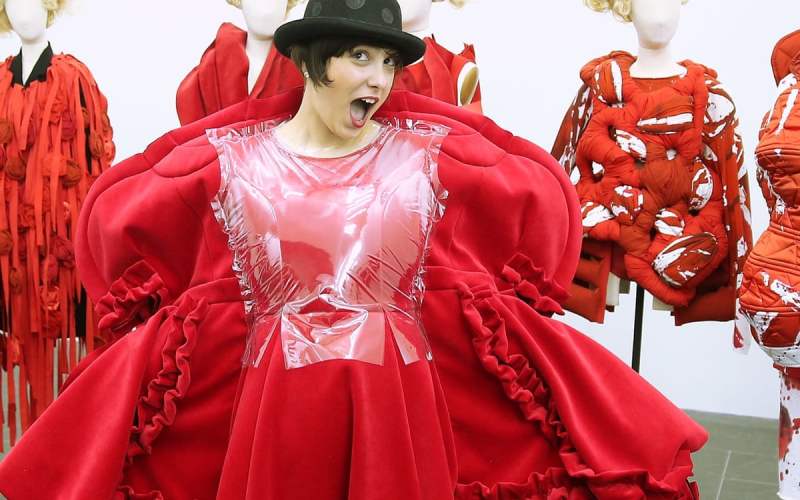Throughout the landscape of contemporary design, few figures have reshaped the very meaning of creativity and conceptual expression as profoundly as Rei Kawakubo. Founder of the influential fashion label Comme des Garçons, Kawakubo’s contribution transcends fashion, influencing architecture, art, and the lexicon of conceptual design itself. To discern what Rei Kawakubo represents in this field, one must explore how she continuously interrogates norms, rebuilds aesthetic paradigms, and provokes discourse on the essence and possibilities of design.
Challenging Aesthetic Conventions: Deconstruction as Philosophy
At the heart of Rei Kawakubo’s conceptual methodology is a profound reexamination of aesthetics, shape, and composition. When she first presented her work in Paris in the early 1980s, Kawakubo unveiled lines that challenged conventional Western ideas of balance and charm. Her clothing featured uneven cuts, raw edges, and intentionally worn materials. Items from the influential “Destroy” collection (1982) caused a stir in the fashion industry. Reviewers labeled her creations “Hiroshima chic,” a term that, despite its contentious nature, highlighted her dedication to provoking thought and discomfort over mere decoration.
Kawakubo’s philosophical approach functions within a framework of deconstruction. Drawing inspiration from literary and architectural concepts, she challenges conventional dualistic interpretations of gender, objects, and purpose. For instance, the clear boundaries between attire and sculpture become indistinct in her “Body Meets Dress, Dress Meets Body” (Spring/Summer 1997) collection, as exaggerated padding alters the human form, prompting an examination of the structural relationship between the body and garments.
Anti-Fashion and the Void: The Significance of Emptiness
Rei Kawakubo is closely associated with the concept of anti-fashion. She fosters discussion by rejecting conventional reference points—her inclination for black, asymmetry, and negative space encourages reflection on what is absent as much as what is there. According to Kawakubo herself, she strives to “make clothes that didn’t exist before,” emphasizing her conviction that design needs to explore the emptiness to achieve fresh significance.
Negative space is crucial in her oeuvre. The 2017 Metropolitan Museum of Art retrospective, “Art of the In-Between,” showcased how Kawakubo’s work dwells in liminal zones, her garments often suspended between art and apparel, east and west, abstraction and function. Clothes become a spatial experiment—voids, cutouts, and spaces evoke absence as a legitimate mode of presence.
Conceptual Storytelling: Moving Beyond Traditional Story Structures
Unlike many designers, Rei Kawakubo refuses to offer overt stories or influences for her collections, often frustrating critics and confounding traditional marketing. Her design process is inherently conceptual; the meaning is communicated through form, tension, and disruption rather than explicit narrative. She compels the observer to form their own interpretation, positioning each collection as a philosophical inquiry rather than an aesthetic solution.
A prime example is the “18th-Century Punk” collection (Autumn/Winter 2016), which superimposed baroque opulence on subversive, shredded structures, denying both historical fidelity and contemporary commercialism. This opposition cultivates an intellectual antagonism—a challenge to complacency in both the creator and the audience.
Interdisciplinary Impact and the Democratization of Design
Kawakubo’s influence extends to architecture and retail space, manifesting in her collaboration with architects like Zaha Hadid and the avant-garde design of Comme des Garçons boutiques worldwide. These environments mirror her philosophy: retail spaces with unexpected spatial arrangements, experimental lighting, and unique navigation encourage visitors to engage with fashion as conceptual installation art rather than commercial product racks.
Her role in making design more accessible is also incredibly significant. Through partnerships with popular brands like H&M and Nike, Kawakubo blurs the lines separating exclusive conceptual art from common clothing, prompting a reevaluation of how attainable design truly is.
Cultural Legacy: Instigating Dialogue on Identity and Self
The deepest insight from Rei Kawakubo’s approach to conceptual design is her demonstration that clothing transcends mere utility or ornamentation. Instead, they serve as conduits for investigating identity, self-awareness, and societal frameworks. Her decision not to differentiate between male and female forms sparked extensive discussions about androgyny and gender within the fashion world. Her ongoing opposition to classification prompts contemplation on how design embodies evolving societal stories.
Her methodology elevates the designer’s position beyond a simple stylist or artisan to that of a philosopher and instigator. Kawakubo’s enduring impact stems not from widespread popularity or sales figures, but from her capacity to provoke unease, conversation, and change. She embodies an ongoing defiance of stagnation, serving as a testament that in conceptual design, genuine advancement emerges not from adherence to norms but from bold inquiry, novelty, and the challenging of preconceived notions. In her hands, design transcends being merely an answer; it evolves into a query in its own right, perpetually open to diverse understandings and fresh interpretations.




